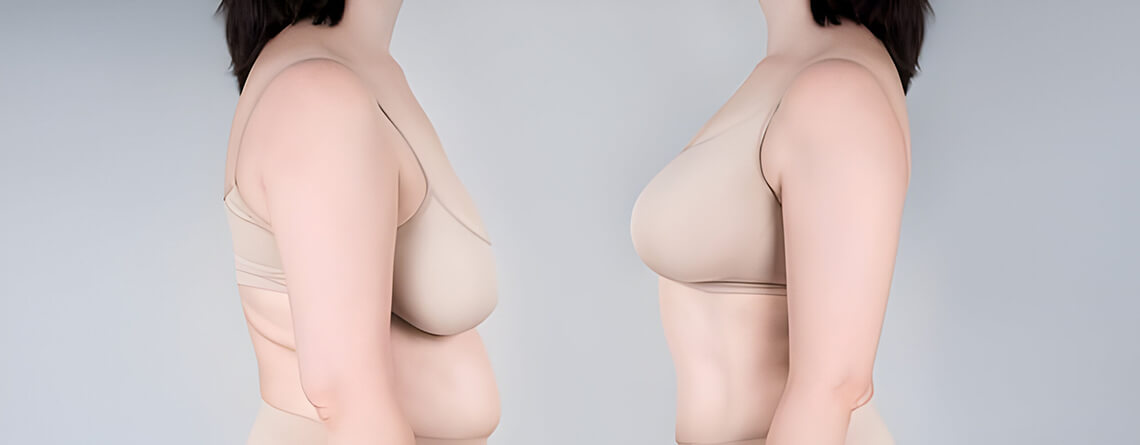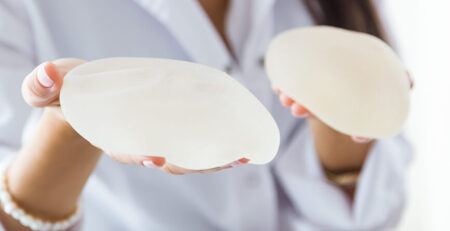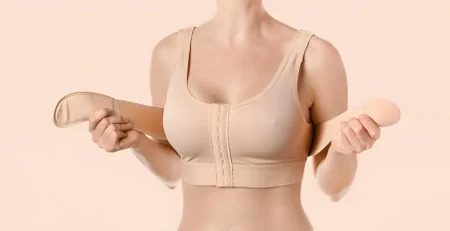How Long Does Breast Augmentation Last?
Breast augmentation surgery, one of the most common cosmetic procedures worldwide, allows people to change the size and form of their breasts, improving their overall appearance and self-esteem. This procedure involves the surgical insertion of breast implants, either silicone or saline, to obtain the desired cosmetic effect. While breast augmentation can provide considerable benefits in look and confidence, one prevalent issue among potential candidates is how long the results will last. How long does a breast implant last?
In this blog, we will understand how long breast augmentation lasts and what factors influence the longevity of breast augmentation. Let’s get started.
Breast Augmentation Surgery Procedure
Breast augmentation is a surgical procedure used to increase the size and form of the breasts, which typically results in enhanced body image and self-confidence for many people. The method includes inserting breast implants beneath the breast tissue or chest muscles to provide a more proportional and cosmetically pleasing breast shape. Silicone and saline breast implants are the two most common varieties used for augmentation.
Many women choose silicone implants because they give a smoother, more natural look and feel. In contrast, saline implants contain sterile salt water. While saline implants may feel less natural than silicone implants, they allow changing the fill volume during surgery to achieve greater symmetry.
Individual choices include the type of implant, its size, breast augmentation cost and the desired cosmetic effect. These choices should be made in consultation with a plastic surgeon, who may offer advice depending on the patient’s body type, lifestyle, and aesthetic objectives.

Factors Affecting Implant Longevity
Breast augmentation through implants offers a long-term effect. However, the longevity of breast implants is influenced by several key factors. Understanding these factors can help people create realistic goals and plan for the future.
Type of Implant: The durability and longevity of breast implants differ between the two primary types: silicone and saline. Silicone implants are frequently recognized for their natural feel and are regarded as more durable than saline implants. They are less prone to rupture or collapse with time, reducing breast augmentation costs. However, when a silicone implant ruptures, it may not be immediately apparent, so monthly MRI scans are needed to check its status. While saline implants may feel less natural, they can be quickly identifiable if they burst, as the body harmlessly absorbs the saline solution and causes the implant to burst.
Surgical Technique: The surgical approach utilized during breast augmentation has a substantial influence on the implant’s lifetime. The implant’s location (under or over the muscle) can influence how natural the breasts seem and feel over time, as well as the risk of issues, including capsular contracture, which can limit the implant’s lifetime. Breast augmentation surgery techniques that reduce tissue injury and maintain adequate placement can produce long-term outcomes.
Patient Lifestyle: Lifestyle choices and post-surgical activity can influence implant durability. High-impact activities, particularly those requiring resilient chest motions, may increase the risk of implant displacement or rupture over time. Maintaining a constant weight and avoiding major modifications can also assist in retaining the cosmetic benefits, as weight increase or loss can change breast form and size, potentially leading to dissatisfaction with the implant look and affecting breast augmentation costs.
Aging and Body Changes: Natural aging and physiological changes, such as pregnancy and nursing, can all impact the health and appearance of breast implants. Skin elasticity decreases with time, and breasts may change size and shape, potentially compromising the look of the implants and prompting a revision operation to restore the intended aesthetic result.
While implants are built for longevity, they may not stay forever, so be prepared for future modifications and necessary maintenance or revision operations is vital to the decision-making process.
Signs You May Need a Revision
Recognizing the indicators that may suggest the need for breast implant revision breast augmentation surgery is critical to retaining the cosmetic and health benefits of breast augmentation. Changes in implant look or feel might indicate problems that require expert attention. Some of the most popular indications are:
- Capsular Contracture: This happens when the scar tissue around the implant tightens, making the breast seem harder than usual and occasionally producing pain or an unnatural look.
- Implant Displacement or Movement: Over time, implants may shift from their original location, resulting in asymmetry or an unnatural appearance, especially visible during physical activity or while lying down.
- Rupture or Deflation: If a saline implant ruptures, it will collapse significantly. However, a silicone implant may have a quiet rupture that can only be detected with imaging testing. Both cases demand rapid medical care.
- Cosmetic Concerns: Changes in personal aesthetic preferences or unhappiness with the initial results, such as wanting a different size or shape, can all cause you to seek revision surgery.
If you notice any of these changes or are concerned about the status of your breast implants, speaking with a board-certified plastic surgeon can help you assess if revision surgery is required to attain your desired results or address any health-related complications.
How to Maximize the Lifespan of Implants?
To maximize the lifespan, maintain the integrity of breast implants and reduce breast augmentation cost, several proactive steps should be taken:
Regular Follow-ups and Imaging Tests: Regular follow-up appointments with your plastic surgeon are essential for evaluating any changes or possible concerns early, allowing for quick intervention if necessary. The FDA advises MRI scans three years after surgery and every two years after that to screen for silent ruptures in silicone implants.
Lifestyle Changes: Making specific lifestyle changes, like wearing supportive bras, particularly during intense activity, will help your implants last longer and prevent displacement or sagging over time. It will also maximize the overall breast augmentation costs.
Select a Skilled Surgeon: The most important component in extending implant life is the initial selection of a highly talented and experienced plastic surgeon. A surgeon’s skills in selecting the appropriate type and size of implant, as well as accurate surgical procedure and post-operative care, lays the groundwork for long-lasting and gratifying outcomes.
Schedule Your Consultation Today!
Breast augmentation surgery offers a path to enhanced self-image, but the longevity of the results varies based on multiple factors. Consult with a Board-certified plastic surgeon like Dr. Lokesh Handa to understand the influence of these factors on implant durability and take steps to maintain your implants; you can enjoy lasting satisfaction with your augmentation.

Dr. Lokesh Handa
M.S, M.Ch
Sr Consultant Plastic, Aesthetic and
Hair Transplant Surgeon
Dr. Lokesh Handa, a board-certified plastic surgeon with over 15 years of experience, holds esteemed titles of M.S. and M.Ch. He serves as a Senior Consultant in Plastic, Aesthetic, and Hair Transplant Surgery.
As the Director of Med Esthetiks, his commitment to excellence is evident. Dr. Lokesh Handa is a distinguished member of renowned organizations, including ISAPS (International Society of Aesthetic Plastic Surgeons), APSI (Association of Plastic Surgeons of India), and IAAPS (Indian Association of Aesthetic Plastic Surgeons). With extensive expertise, he blends precision and artistry, offering unparalleled care in the realm of plastic surgery and contributing significantly to the advancement of aesthetic practices.
To book an appointment, call: +91-8800203431 or email: care@medesthetiks.com











